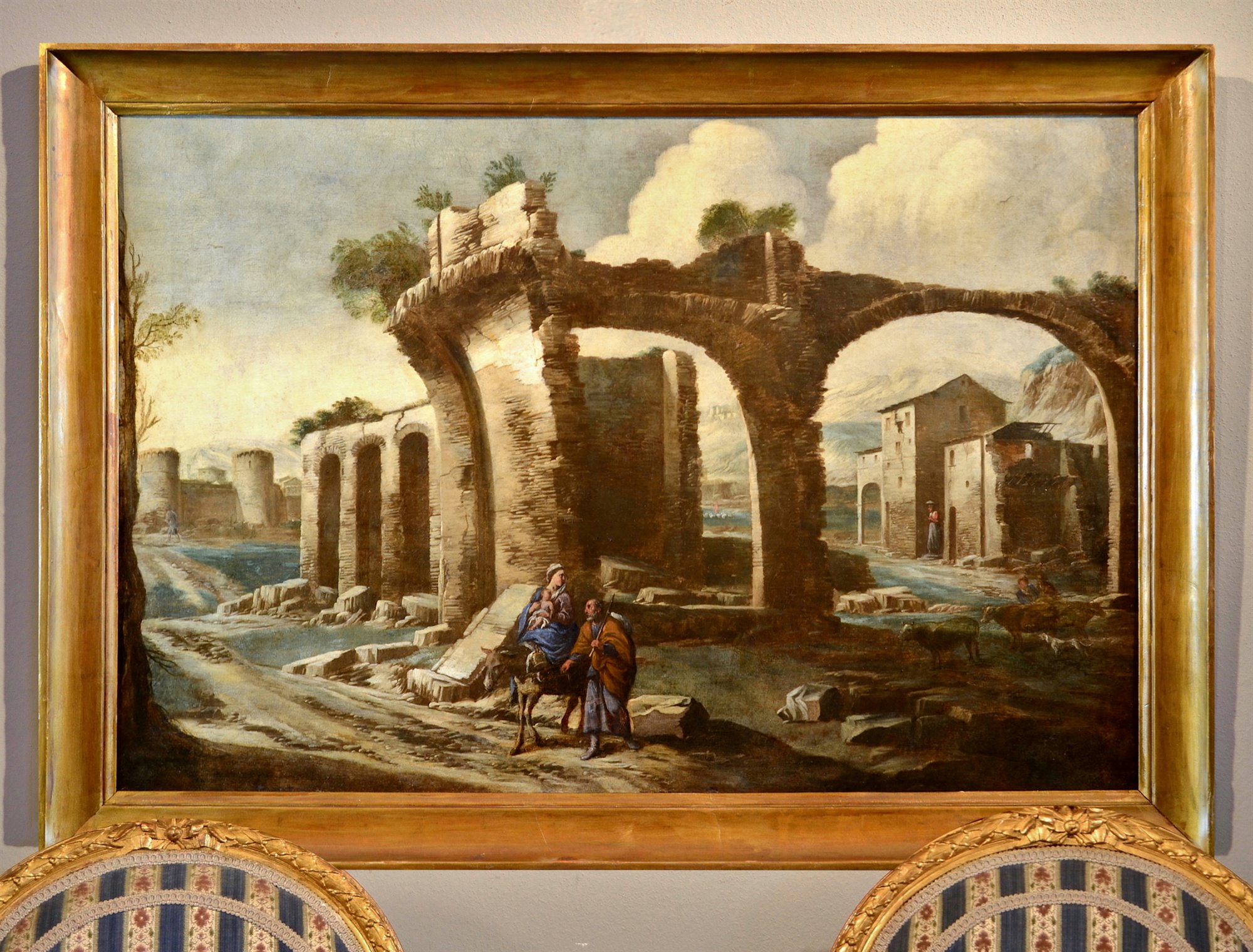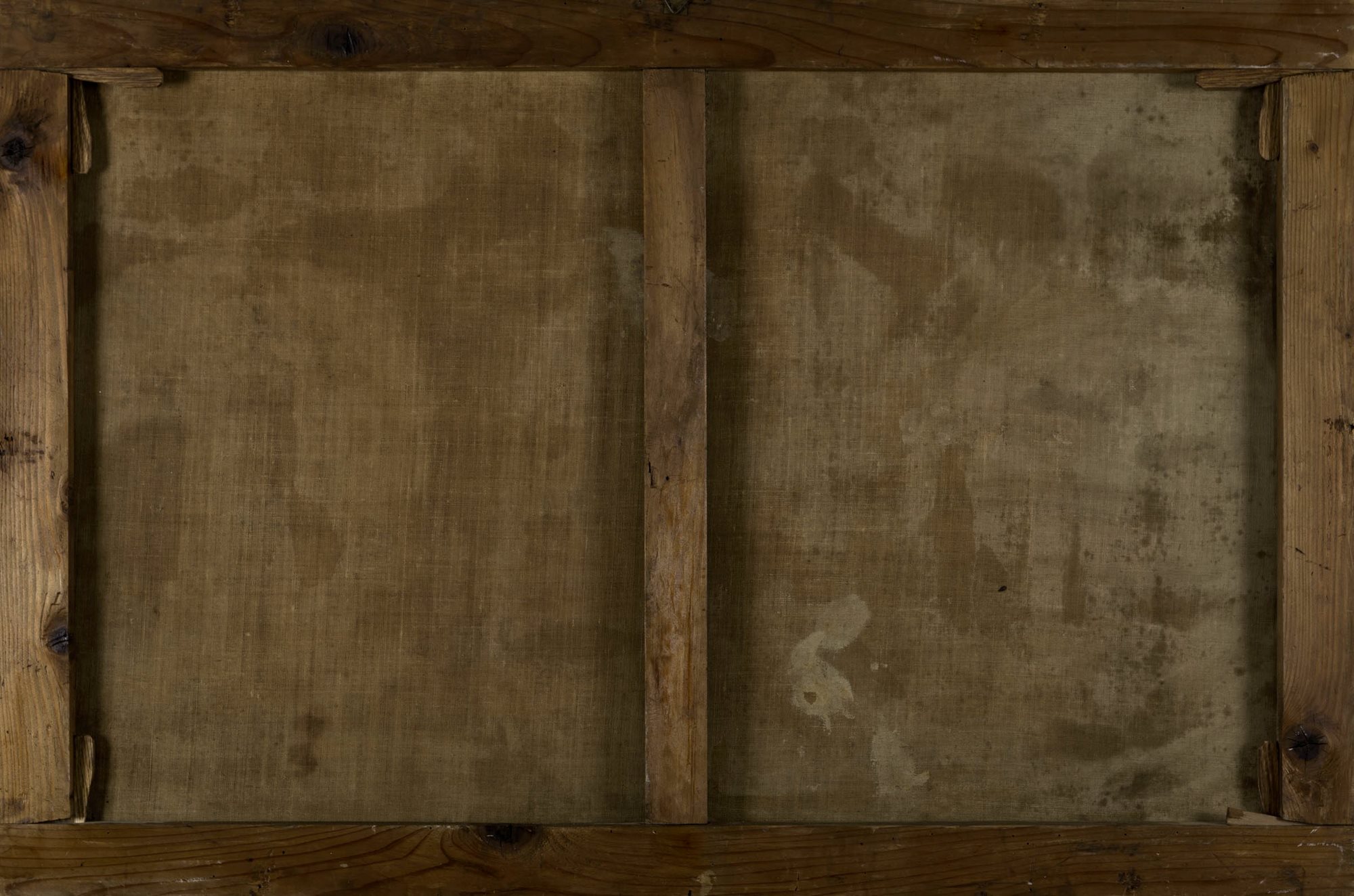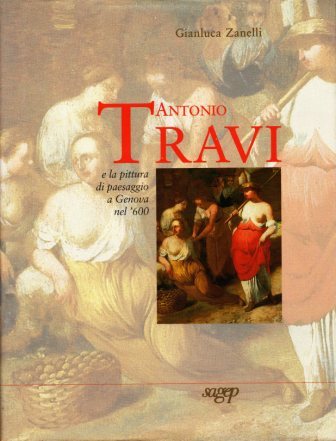Antonio Travi, detto il Sestri (Genova 1608 - 1665)
Paesaggio con rovine e scena biblica
Antonio Travi, known as Sestri
(Genoa, Sestri Ponente 1608 - Genoa 1665)
Landscape with ruins and biblical scene
first half of the seventeenth century
oil on canvas, 82 x 121 cm
with frame cm. 105 x 145
with frame cm. 105 x 145
The beautiful published painting, which shows us a wide landscape with architectural ruins, fully reflects the pictorial poetics of Antonio Travi (Sestri Ponente 1608 - Genoa 1665), the first landscape painter of the Genoese pictorial school; poetic that remains constant throughout his successful career: from the beginning, as a student of Bernardo Strozzi, until his death in 1668, when by then his flourishing workshop was joined by numerous children and pupils. The imposing ruins, highlighted by an algid and shining luminosity, are the background to the biblical episode of the flight into Egypt, with the Holy Family in the foreground.
Looking at the style characters, we see the evidence of the brushstroke and the love for color typical of the master Strozzi, but also a clarity and a precision typical of the Flemings active in Genoa, with a particular reference to the German Goffredo Waals, present in several collections of the Genoese aristocracy. Wals' luminous and metaphysical scenes are translated into Travi's painting with a ruinistic taste in a Ligurian key, through fast brushstrokes, dense in color and a fantastic naturalism accentuated by silvery brightness. From the proposed canvas we can deduce typical elements of his palette, such as the accurate chromatic accords and the studied insertion of brighter hues on the basic tones of the earths and whites.
As far as composition is concerned, his passionate investigation of the Italian landscape remains practically unchanged over time, where the traces of the inexorable time he spends - ancient ruined architecture and dilapidated houses - inhabit the scenarios of a silent nature. His works are always animated by small figures, who carry out their daily activities with simplicity: they bring their flocks to drink or graze on the banks of the river. The same popular daily life of its genre subjects also characterizes the paintings with a sacred theme, such as the one in question, always dominated by an order that instils a quiet sovereignty to the environment.
However, it must be emphasized that the presence of man never appears to be decisive but rather, the true protagonist of his works is a nature that shows itself in all its simplicity. This canvas makes it explicit: almost a manifesto of his poetic vein, where ruin is the true queen of the scene: the inexorable passing of time to which nothing can be opposed, if not Mother Nature, in her silent resistance made of eternally blue skies crossed by clouds, by waterways that will always descend to the sea, from meadows and valleys, trees and stones.
The quality that is perceived is that of a work of exquisite autography: see the reflections on the water, the descriptive minuteness of the ruin in every stone and even in the traces of decoration on the arches at the top, the strokes of white that are flashes of light.




